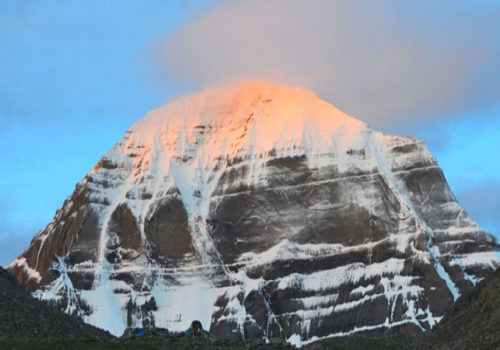
Nestled in the rain shadow, beyond the formidable barrier of the Himalayas, lies the expansive Tibetan plateau, often referred to as the “roof of the world.” Much of Tibet is characterized by a breathtaking arid desert that stretches for thousands of kilometers into central Asia. It is a land of boundless horizons, ancient cultures, and mystical Buddhist traditions.
Renowned as the Roof of the World, the Tibet Autonomous Region of China sits atop a plateau with an average elevation of 4000 meters. Bounded by the Kunlun Mountains to the north and the Himalayas to the south, Tibet covers an area of 1.2 million square kilometers and is home to a population of 2.3 million.
Tibet evokes a sense of awe and mystery with its ancient culture, awe-inspiring landscapes, artistic monasteries, and centuries-old caravan trails. It is a destination that transcends the ordinary, captivating mankind for centuries. For long, Tibet remained inaccessible to the outside world, earning monikers like the “Land of Mysteries” and the “Forbidden Land.” It has beckoned explorers, scholars, pilgrims, and adventurers in search of a mythical Shangri-La.
For centuries, Tibet remained off-limits to most travelers as the Tibetans fiercely guarded their country’s borders. Until the Chinese invasion in 1951, the nomads, farmers, and traders led a resilient yet contented life. Religion intertwined with the state, shaping every facet of daily existence according to Buddhist teachings. Despite the challenges, the Dalai Lama, currently in exile in India, encourages Westerners to visit Tibet, as do the Tibetan people. Through travel in Tibet, one gains a deeper understanding of Tibetan culture and a glimpse of the indomitable spirit of its people.
Tibetan culture is rich with traditions such as Loshar, the Tibetan New Year, which is the largest and longest festival. Rituals like sky burials, water burials, stupa burials, and cremations hold great significance. Tibetan science and culture are steeped in various fields including technology, medicine, Buddhist philosophy, astrology, drama, and debating.
The allure of Tibet and its hospitable people have fascinated travelers for centuries, though few have had the opportunity to experience it firsthand. Despite its remoteness and isolation, Lhasa, the ultimate travel destination, is now more accessible than ever before.
Embarking on an adventure across the Trans-Himalayan route, spanning over 970 kilometers and traversing four mountain passes, promises an unparalleled panorama of cultural and scenic diversity. Highlights of a visit to Tibet include the Buddhist monasteries of Drepung, once the largest; the Jokhang, a spiritual center; and the magnificent palaces of the Dalai Lama such as Norbulingka, the Summer Palace, and the iconic Potala Palace, the traditional seat of Tibetan governance.